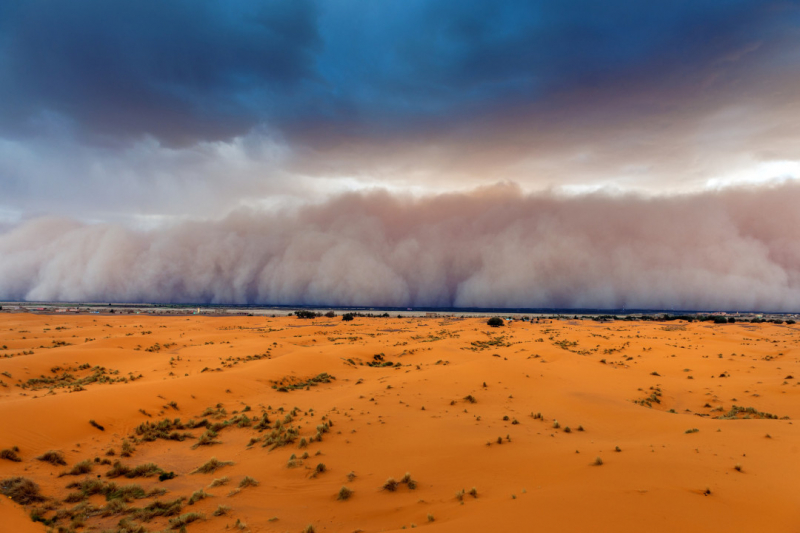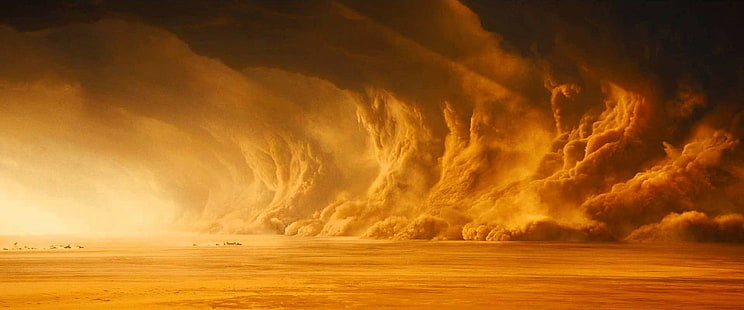Sandstorms
We who don't reside in arid areas will never fully comprehend the magnitude and extent of a dust storm. Although you may see footage of them on YouTube, it's not quite the same as in many other cases. You can't fully capture the wonder of when a wall of dust manages to completely cover the sun in a video. Cairo frequently experiences dust storms with winds gusting to at least 50 km/h and waves of dust rising to a height of about 5 meters. Until the storm passes, a gray wall covers the sky.
In particular during the infamous Dust Bowl, America has also experienced some very bad dust storms. In 1931, a severe drought that would last for years started. Storms would pick up dry dirt, resulting in what they dubbed "black blizzards."
The layers of dry dirt were thick on April 14, 1935, following an especially severe summer the year before. The storm that followed the arrival of a severe weather front from the north was unheard of by the locals. The result was a dust storm that was thousands of feet high and hundreds of miles wide. 300,000 tons of earth were moved. It was known as Black Sunday. One observer claimed that it was so dark that it was impossible to see the sun in the sky, much less your own hand in front of your face.












